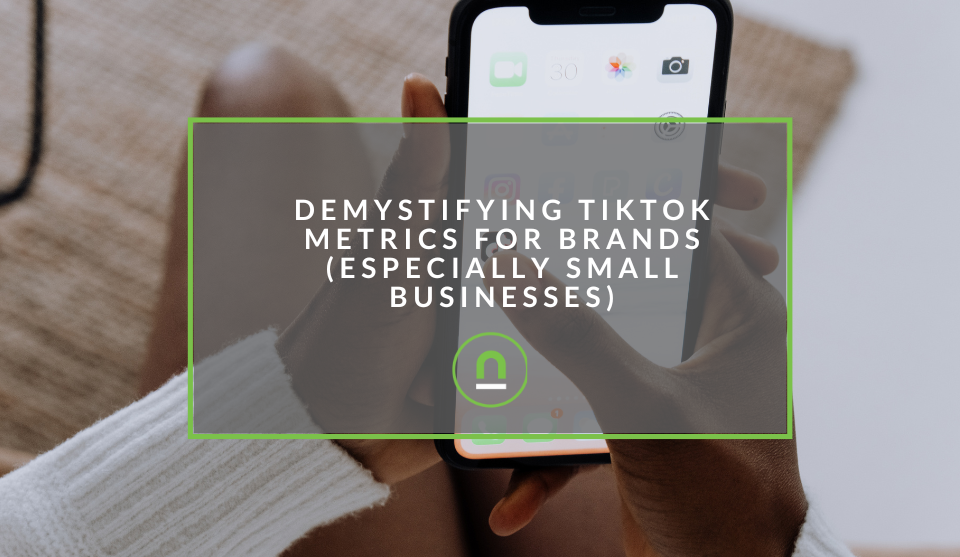Recent posts

Money Talks
The Intricacies of Trading Crypto vs. Forex
03 April 2024

Industry Experts
5 Effective Ways to Drive Traffic to Your Website
19 March 2024

Fur, Fins & Feathers
How To Maintain Your Dog’s Oral Hygiene At Home
14 March 2024

nichemarket Advice
Demystifying TikTok Metrics for Brands (Especially Small Businesses)
13 March 2024
Popular posts
Extravaganza
Trending Music Hashtags To Get Your Posts Noticed
24 August 2018
Geek Chic
How To Fix iPhone/iPad Only Charging In Certain Positions
05 July 2020
Extravaganza
Trending Wedding Hashtags To Get Your Posts Noticed
18 September 2018
Money Talks
How To Find Coupons & Vouchers Online In South Africa
28 March 2019
Why people analytics is the number 1 game changer in Tech
19 April 2017 | 0 comments | Posted by Lee Watts in Industry Experts
Lee Watts, Recruitment and People Analytics Manager at Travelstart, give us some insight on People Analytics and why every company should be making use of this cutting-edge methodology in their recruitment and staff performance process. Read further and find out more about this fascinating science.
Picture this:
A world where you have the ability to accurately and intelligently predict human behaviour within your workforce. Imagine how valuable this unknown information would be. Can you envision the strategic business growth would be enjoyed by processors engineered as a result of this ability
Steve Jobs famously said, “you cannot plot the graph forwards, only backwards”. And this it’s is safe to say, that we can now “machine learn our humans” by using advanced HR Analytics, or even better Predictive People Analytics.
Too many companies keep making the same mistakes whilst expecting different results. I call this insanity. Having worked in human resource space for almost 10 years, I have literally heard all the excuses, from “We are recruiting the wrong people” and “We need a better attrition rate” to “We simply cannot afford that skill set.” These are excuses for bad choices and by keep using them as scapegoats we sacrifice the proper elevation and create business springboard instead. Naturally, we then don’t get the trajectory or elevation needed to be world class!
So where does this leave us?
Simon Sinek would say “Start with Why”
So you probably think, “Lee I hear you say, But what does it all mean?” Let me explain.
In tech culture, certainly within South Africa, we find talent a difficult thing to come by, so when you finally find a Developer, Data Scientist, or talented individual who can exponentially change the landscape of your business forever, you have got to work on a plethora of requirements from their “rider”, provide multiple meaningful reasons for them to join the team as well as swallow deep and pray hard. And it doesn’t end there, you have to work at keeping them!
Now, this isn’t always as easy as it seems, with finite resources, they have a choice, and our working world’s new culture is seeing to that. Remote work, Y Generation and their desired work environments, flexible working hours, premium payment rates are all thrown at these candidates and how do we justify all of these decisions? More often than not a reference request from a former employer used - which according to google only accurately predicts performance to 7.5 % in that candidate’s future role.
Some advice from the big shots
So how do the “Great” names' do it? Well, Laszlo Bock, former Vice President of Google People operations would suggest that it’s all about winning the argument, through a conversation using data as the evidence. This is key to successful recruiting.
Angela Duckworth might suggest what you really need is Grit: The power of Passion and Perseverance. As an FYI – She backed her findings over a decade of research using data as the evidence to individual and in some cases a team’s collective human performance.
This seems pretty simple, run a few surveys, establish a trend, and work towards that? Right? The truth is, it’s a tad more complicated than that.
How to conduct effective people analytics
Firstly, you have to want to do this. Adam Grant, Author of Originals: How Non-Conformists change the world, gives in this book excellent insight into people trends. Adams advises that what we thought we knew about people, is outdated and is now verging on the opposite end. But how do we manage these brilliant people? We use analytics as evidence to predict human behaviour, in simple terms Machine Learn Humans.
In Laszlo
Mckinsey.com suggests that more sophisticated analyses of big data are in fact helping companies Identify, recruit and reward their best personnel. But let’s put our money where our mouth is and have a look at this data analysis working in real-time.
The proof is in the pudding
In the last year (2016) the Recruitment and People Analytics team at Travelstart, Africa’s Largest Online Travel Agency (Careers Page) implemented several analytical strategies relating to its employees. We started our journey on finding value using people data, relating to business objectives within the desired economies of scale. We had to ask a lot of questions before we could begin:
- What are the overall business objectives?
- What are we trying to achieve with our human capital?
- How can we make money using this data?
- How can we save Money using this data?
- How can we improve efficiency using this data?
Eventually, after one year we started to see absolutely astonishing results. The beauty in this initiative is that according to Netflix, African based e-commerce companies are likely to hire their first People Analytics Managers in 2017. At Travelstart we knew we were winning, we hired that person in 2016!
Where to start?
Start with something simple. Work out what “stock” you have. Basic demography work, followed by who is who in which team, what they do, what they cost, how qualified are they etc, etc. Establish your top performing 20%. Followed by the next 70% and finally your bottom performing 10%. In order to understand what to recruit and what to look for, the above will work, amongst an endless wish list of potential strategic outputs, I might add! Sounds like Jack Welch, I know! But this is not our methodology we will not just fire the bottom 10%.
If you could increase the performance of the bottom 10 or 20 % you instantly lift the overall percentage of company output by X (algorithmic calculation) If this never happens, you know why! You also then know what signs to look for, and equally as important what to avoid.
Useful findings
Whilst there are a million things you can test, analyse and predict. My final finding follows this example: We started with IQ vs EQ. Dr Bradberry and Dr Greaves wrote a book called Emotional Intelligence 2.0. It comes with an EQ test. Do it. It provides evidence of its findings in Data. Present in 75% of fortune 500 companies, this assessment of EQ accurately predicts that for specific roles, EQ gives you 58% chance at career success as oppose to IQ which gives you a 20% chance at making your career a success. This helps individuals with:
- Self Awareness,
- Self-Management,
- Social Awareness and
- Relationship Management.
These are cornerstones of coming to work on time and collaboratively working with your colleagues in a measured way. Delivering on deadlines and actually being able to communicate effectively in whichever medium of choice. Good combos of IQ + EQ = (curious + humble). Awesome, so we have a person who wants to learn, but is happy to accept feedback in order to better themselves through change.
Any guesses how we provided that feedback? You guessed it, Data as evidence. We use many techniques, some of my favourites are the most simple: Discus, 360 reviews, Individual team service delivery (based on feedback from colleagues) Temp Check (happiness or sadness hyperflex, PS only measure this one on its return to your inbox, not when you send it out!) I’ll bet John Achor loves that one!
The essence of people analytics
I could write for days on this topic alone. But what it boils down to is the following:
- Create Rapid, proactive and reactive response processes. (Recruitment)
- Create Team personas as well as employee profiling within those teams. (People Analytics)
- Create quantified filters, as well as feedback platforms. (HR)
Action the feedback (Recruitment and HR combo)- And Finally… Keep on refining your process, Keep on Managing expectations, Keep on providing REAL feedback.
We as humans are NOT objective, we all love to think we have the best gut instinct in the world… but we are a product of our environment, from birth being nudged, bumped, bruised and opinions being formed on historical experiences… I agree there is a place for Gut, but not in Data, and not in Quantified People Analytics.
Lee Watts Recruitment and People Analytics Manager at Travelstart
More about careers with Travelstart
About the Authour
Lee Watts doesn’t have a CTRL key on his Keyboard, that’s because Lee Watts is always in control. Once upon a time, he thought about studying medicine, but his raw honesty had lecturers deciding whilst his bedside manner was likely to be impeccable they were concerned he may end up in a padded room wearing a straight jacket… so, he decided to try something else. Affectionately referred to by colleagues as Simon Baker (The Mentalist) not because he is good looking, or blond, but because he just knows when you are talking smack.
Tags: Data Analysis, guest post
You might also like
How To Maintain Your Dog’s Oral Hygiene At Home
14 March 2024
Posted by James Uba in Fur, Fins & Feathers
A detailed look at how dog owners can put together a oral health care routine for their furry family member and ensure that their dogs pearly whites ...
Read more5 Helpful Travel Planning Tips for Complete Peace of Mind
22 February 2024
Posted by Brigitte Evans in Hit the Road
A look at some of the pre-travel planning you need to consider before you leave for the airport in order to ensure your mentally prepared for what co...
Read more{{comment.sUserName}}
{{comment.iDayLastEdit}} day ago
{{comment.iDayLastEdit}} days ago
 {{blogcategory.sCategoryName}}
{{blogcategory.sCategoryName}}

